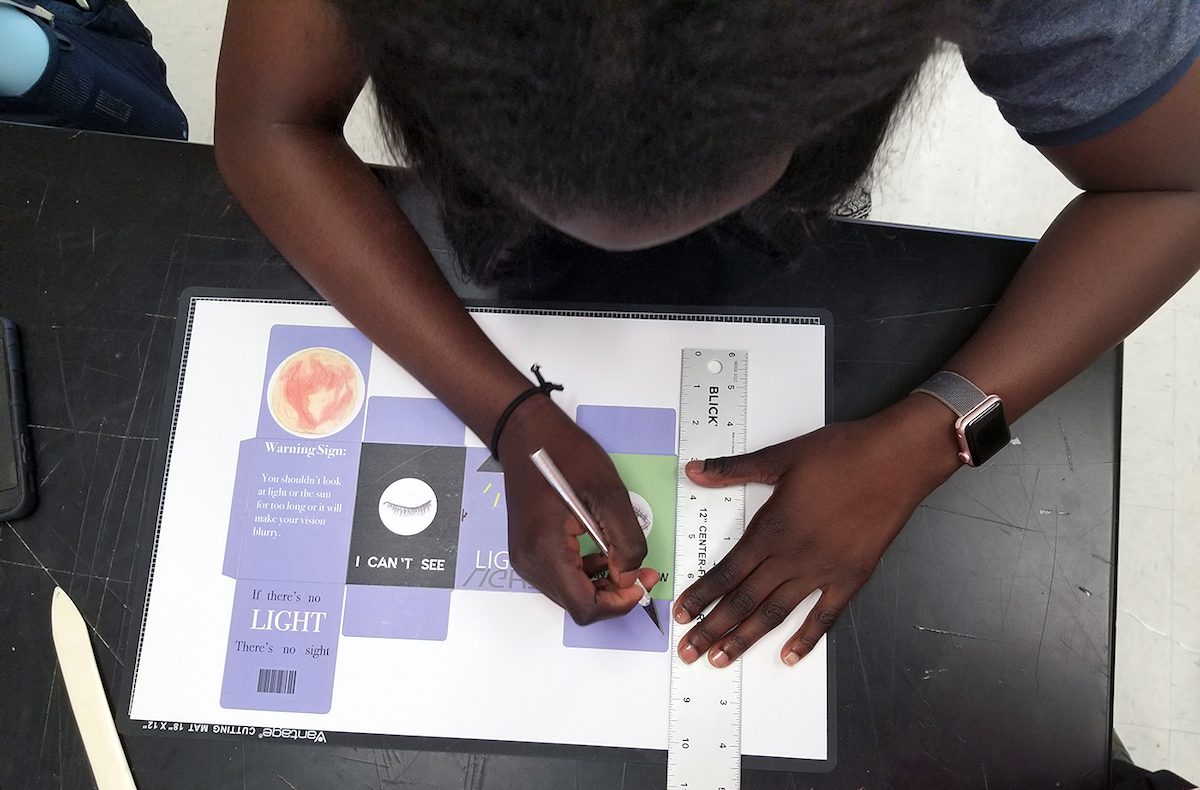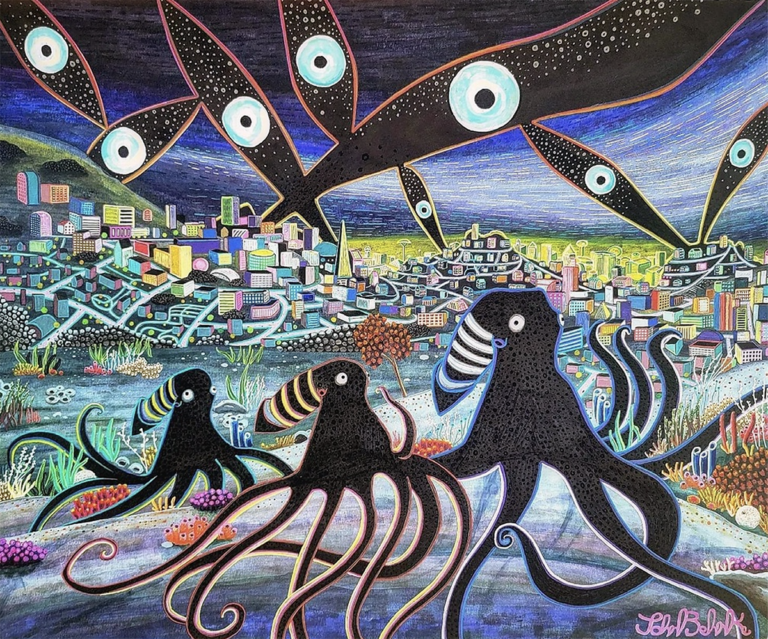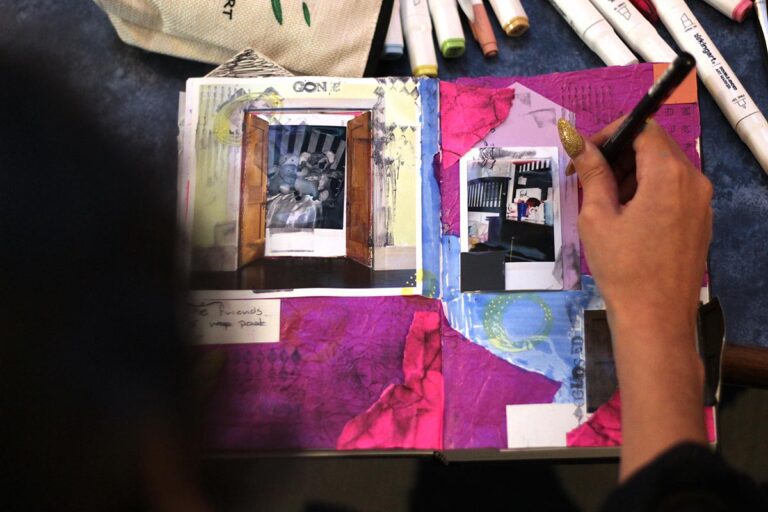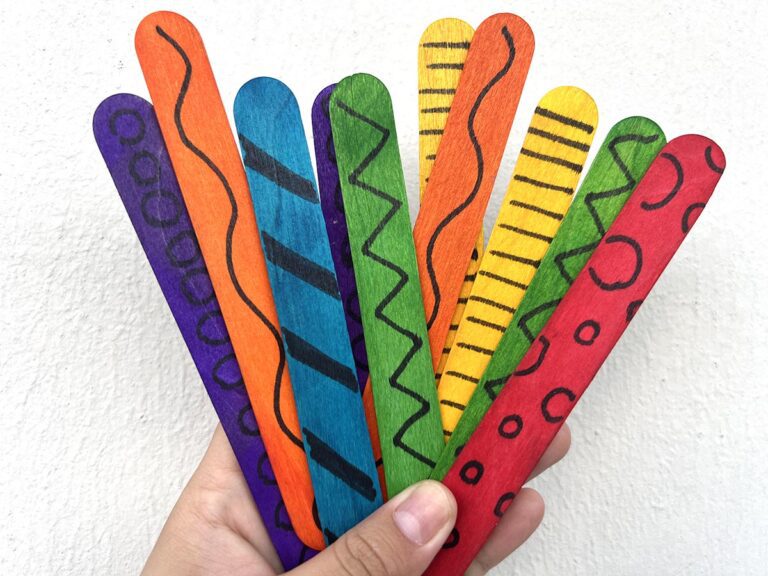Graphic design projects can blur together with the same logos, posters, and vector portraits. So, when a package design project started getting more and more attention at recent competitions in my area, I wanted to learn more. I had a chance to sit down with high school art teacher, Bill Simos, to understand why he explores package design with his students and how to bring it into the art room.
Why Package Design?
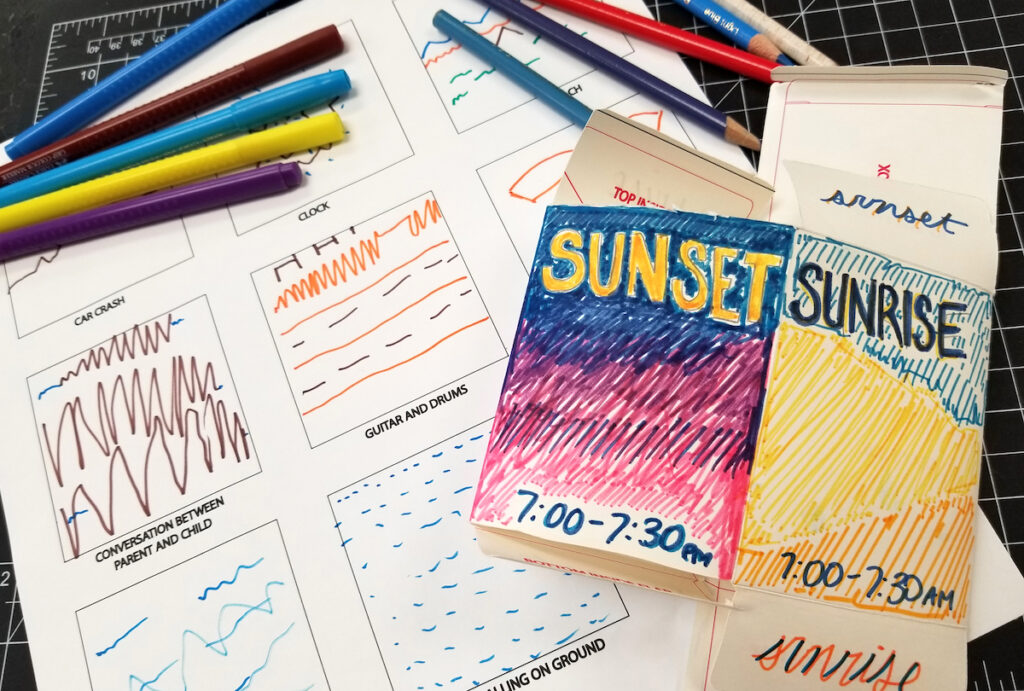
“You are an expert at package design and you don’t even know it.” – Bill Simos
Bill reminded me that we interact with package design on a daily basis. We observe it, handle it, open and close items, and eventually discard packages routinely. We understand the direction, functionality, and where to look for information even when it’s our first time seeing the new package. The relevancy and background knowledge already established make it an excellent project for all students and connects them with everyday design.
Getting Started
While Bill works at the high school level, the beauty of package design is that it can be introduced at all grade levels and differentiated for your students.
Start your lesson planning by answering these four questions:
- What artistic concepts will you cover?
Consider hierarchy, typography, color, composition, unity, etc. - What media will you use?
Digital media is great but doesn’t have to be a barrier to introducing package design to your students. - What new technical skills will help students design?
Based on the media, think about what skills and techniques will help increase approaches for success. - What prompt will you give your students?
Providing a list of options can help differentiate by interest and ability, as well as increasing engagement.
Bill challenges his students to design a box for an intangible product like an emotion or concept. He believes, “The non-physical element adds a challenge in subject matter, and students focus more on representation, symbols, icons, etc., which helps them communicate a unique voice and perspective.”
The last step in planning is to collect a variety of packages for your students to use as resources.
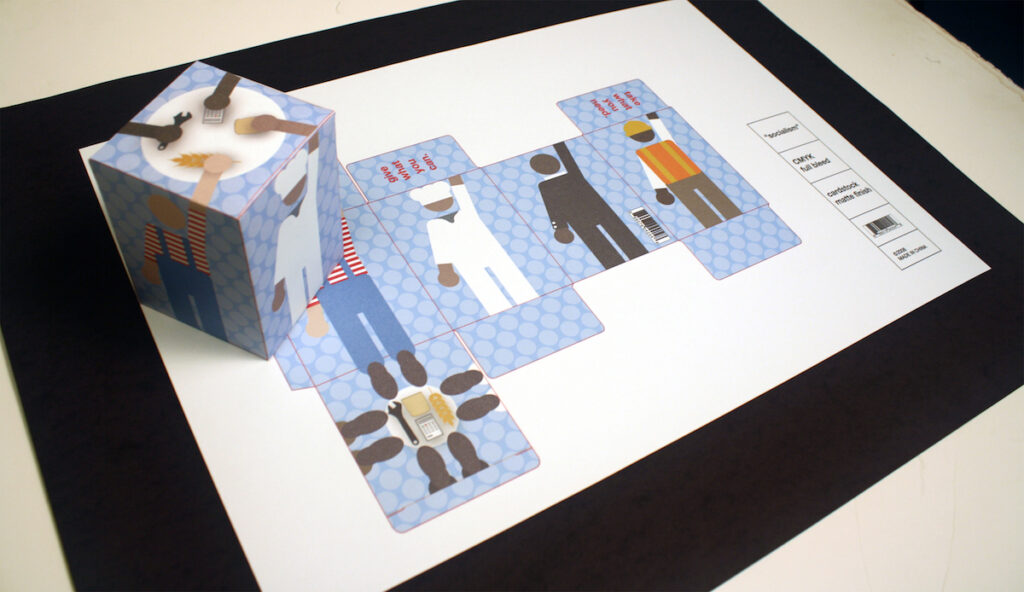
Introducing the Project
Helping students develop ideas through brainstorming and sketching is often overlooked or rushed. But, solid planning can be the determining factor between a good and a great design. To learn more about helping students generate meaningful ideas, check out the Helping Students Plan Artwork PRO Learning Pack.
Follow these simple steps to introduce the project in your class.
Start by immersing your students in handling packages as a designer and not a consumer. Have students observe various packages and take notice of the design, functionality, and potential customer base.
Once students have a general understanding of package design, share the prompt(s) so ideas can marinate while you teach technical skills and practice.
Provide students with a blank template of six-pieces that can also be cut out and folded into a box. Give them an idea to sketch out, so they start to see how sides are designed in isolation and as a unit, as well as how the box comes together.
Present students with any new technical skills that might come in handy when they are working. “What I found with no specific technical requirement,” Bill says, “is that students produce a variety of results.” This flexibility has resulted in students taking more initiative, like proposing transparent windows to view the product inside.
Once students have responded to the prompt and selected their specific project idea, have them repeat the sketching process on the template.
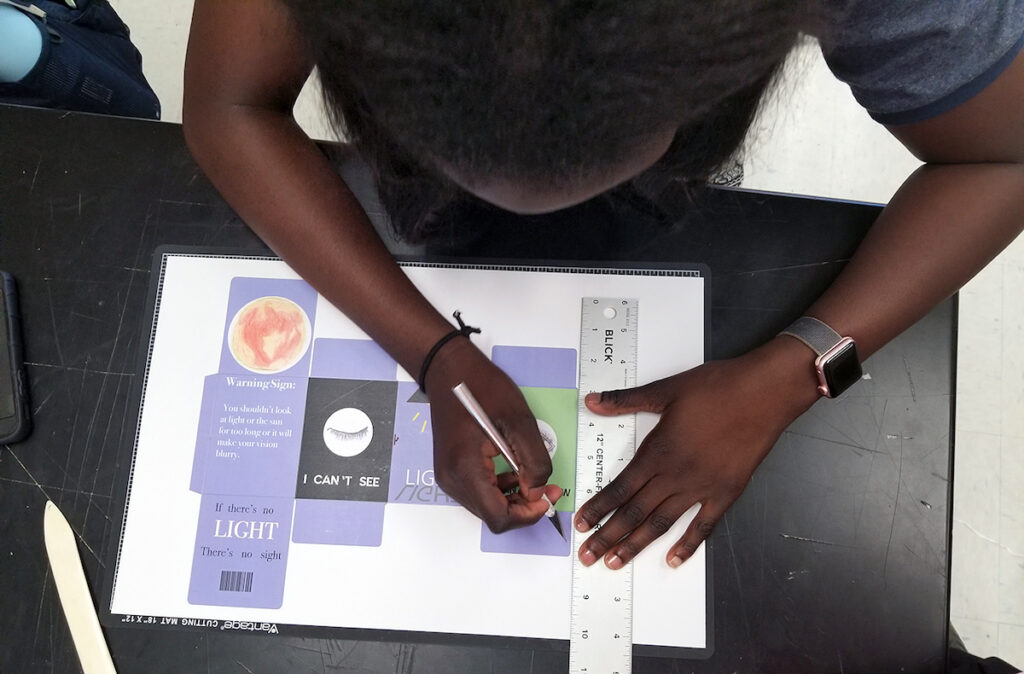
Designing Digitally
Now that students have their idea developed and laid out, they move to the computer to start digitalizing their designs. Without an overwhelming number of technical requirements, Bill is able to work with each student to push their idea in a direction that furthers the piece and isn’t limited by restrictions. Bill finds, “When students don’t do enough ideation, they realize it in the digital stage.” So, don’t hesitate to send students back to the drawing board for further idea development.
After several days of working on designs, students participate in a mid-project critique to get feedback from their peers. To make this process more effective, Bill has students print out their current work and fold it into form to allow the viewers to see each side in relation to the larger package.
To guide the critique, have students respond to the following:
- Which sides are unified in design and which need more work?
- Do the images, symbols, colors, etc. support the messaging for the product?
- Is the hierarchy of type and content appropriate?
Asking for specific feedback from peers helps avoid basic critique responses and gives the designer clear information to apply back to their work.
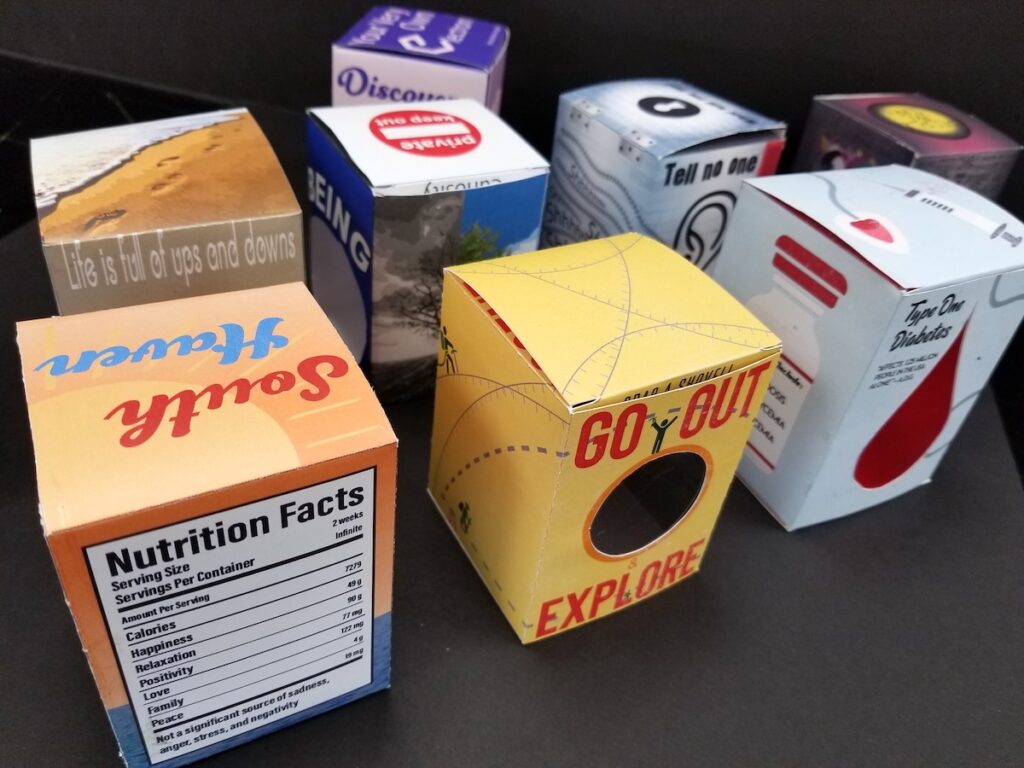
Presenting the Finished Work
Finalizing the project with printouts and displays helps bring the packages to life. Bill’s unique approach to presenting the work showcases the overall design in conjunction with the actual form. Adding elements like swatches and print data creates a more authentic result and introduces students to other steps in the design process. It’s this presentation that has grabbed the attention of judges and viewers alike.
Package design is the perfect lens to deepen students’ understanding of graphic design. Because we all have some level of familiarity with it, investigating package design can add a layer of relevance as students consider design elements and intended consumers. Try out your own package design project using the information shared here and see what happens in your art room!
What design prompts would work well for younger students?
Why is package design often overlooked in design curriculum?
Magazine articles and podcasts are opinions of professional education contributors and do not necessarily represent the position of the Art of Education University (AOEU) or its academic offerings. Contributors use terms in the way they are most often talked about in the scope of their educational experiences.
